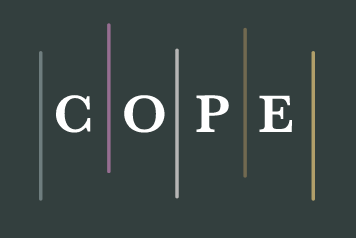Eating and Drinking Formula in the Qur’an: A Systematic Study Based on the Integration of Qur’an, Sunnah, Biology and Medicine
DOI:
https://doi.org/10.58355/maqolat.v2i4.112Keywords:
Noncommunicable Diseases, Eating, Drinking, Formula, and OvereatingAbstract
Non-communicable diseases; related to poor eating habits, present a significant burden on people, as well as economic resources; which in-turn, may affect the effectiveness of saying and doing in the path of Allah (S.W.T). This systematic study was designed to review the guidance of Qur’an on how to avoid this burden; by integrating its verses, ahadith, and signs in the modern Biology and Medicine. Tafsir ibn Kathir and Saheeh International Translation were used to identify the verses that are directly related to this burden. The related ahadith were searched from the six canonical books of ahadith of Ahlu Sunnah Wal-Jama’aa. The related biomedical searches were carried out in PUBMED and MEDLINE databases. Both original and review studies; that were published in the last ten years, were selected. The search terms included food, drink, nutrition, risk factors, and non-communicable diseases. Twenty-four verses, one Hadith, and 23 articles were identified. These verses have revealed the formula on eating and drinking which should be adhered in order to accomplish the mission of our creation, and if not adhered, it may lead to both physical and spiritual effects. This study may have profound contribution on the reduction of this burden; which in turn, may help our capacity building on the work that Allah (S.W.T) has commanded us to do, which is to say and do in His path. It may also rekindle the interest of other researchers to research more on this subject and build up on the formula presented in this study.
Downloads
References
Abbasi, N. (2024). "Mealtime Hydration's Impact on Digestion": An Editorial Article. https://doi.org/10.32388/4PHUG8.3.
Bakry, N., Mz, M. H., & Armia, M. S. (2023). The paradigm of modern food products and its relevance with the concept of food in the Quran. Heliyon, 9(11).
Dolatkhah, R., Jabbaripour, P., Somi, M. H., & Roshani, A. (2020). The role of islamic lifestyle and healthy nutrition in accordance with the recommendations of Islam and the holy Quran by focusing on the risk of cancer incident. Journal of Community Medicine and Health Solutions, 1(1), 018-022.
Farhangi, H., Ajilian, M., Saeidi, M., & Khodaei, G. H. (2014). Medicinal fruits in holy Quran. International Journal of Pediatrics, 2(3.2), 89-102.
Ghaffari, F. (2014). Healthy nutrition from the perspective of the Holy Quran. Journal of Advances in Medical and Biomedical Research, 22(90), 97-109.
Iqbal, A. S. M., Jan, M. T., Muflih, B. K., & Jaswir, I. (2021). The role of prophetic food in the prevention and cure of chronic diseases: A review of literature. Malaysian Journal of Social Sciences and Humanities (MJSSH), 6(11), 366-375.
Khalid, S. M. N., & Sediqi, S. M. (2018). Improving nutritional and food security status in Muslim communities: Integration of Quranic practices in development programs: A Review. International Journal of Nutrition Sciences, 3(2), 65-72.
Mahdavinejad, G., & Eftekhar, M. (2019). Nutrition in Islam. Journal of Biochemical Technology, 10(2-2019), 53-53.
Marwat, S. K. (2009). Vegetables mentioned in the Holy Qura’n and Ahadith and their ethnomedicinal studies in Dera Ismail Khan, NWFP, Pakistan. Pakistan Journal of Nutrition, 8(5), 530-538.
Muhammad, M. J. (2020). A Linguistic Study of ''and'' (ﻭ) in Arabic and English. Asian ESP Journal.
Nadi-Ravandi, S., & Batooli, Z. (2022). Knowledge mapping of articles on application of the Quran and Hadiths in health care: vosviewer visualization techniques. Journal of religion and health, 61(5), 3940-3968.
Niri, S. A. M. H. (2021). Food health in the view of Islam. Journal of Nutrition and Food Security.
Quezada-Calvillo, R., & Nichols, B. (2009). Digestion and Absorption of Carbohydrates. D. LB a. BLN Wilson G. Pond (Ed.), Adequate Food for All, 69-87.
Romieu, I., Dossus L., Barquera S., et al. Energy balance and obesity: what are the main drivers? Cancer Causes & Control . 2017;28(3):247–258. doi: 10.1007/s10552-017-0869-z. [PMC free article] [PubMed] [CrossRef] [Google Scholar].
Sagesaka, H., Sato, Y., Someya, Y., Tamura, Y., Shimodaira, M., Miyakoshi, T. et al. (2018). Type 2 Diabetes: When Does It Start. Journal of the Endocrine Society, 2(5): 476–484. Doi: 10.1210/js.2018-00071.
Shiwani, M. H. A Thematic Analysis of Human Nutrition as Described in the Holy Qur’an. Journal of The British Islamic Medical Association, 6, 1-14.
Tarighat-Esfanjani, A., & Namazi, N. (2016). Nutritional concepts and frequency of foodstuffs mentioned in the Holy Quran.
Teymoori, F., Mokhtari, E., & Mirmiran, P. (2021). Principles of Nutrition from the Perspective of the Holy Quran: A Review of all Verses Related to Nutrition in the Quran. Qur̓ān va ṭib (Quran and Medicine), 6(3), 13-22.
Tiruneh, F. N & Ejigu, B. A. (2023). The Link between Overweight/Obesity and Noncommunicable Diseases in Ethiopia: Evidences from Nationwide WHO STEPS Survey 2015. International Journal of Hypertension. Doi: 10.1155/2023/2199853.
World Health Organization (WHO). (2023). Noncommunicable diseases. Available online at: https://www.who.int/news-room/fact-sheets/detail/noncommunicable-diseases. Accessed on July 9, 2024.
Downloads
Published
How to Cite
Issue
Section
License
Copyright (c) 2024 Abdillah Kitota

This work is licensed under a Creative Commons Attribution 4.0 International License.






















